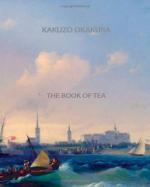
|
| Name: _________________________ | Period: ___________________ |
This test consists of 15 multiple choice questions and 5 short answer questions.
Multiple Choice Questions
1. What is it important to remember about this art?
(a) It is a religious rite.
(b) It is a requirement.
(c) It is not a religious rite.
(d) It is a prayer.
2. Tea-masters were conscious of art as what?
(a) A form of entertainment.
(b) A living.
(c) A sport.
(d) A hobby.
3. On what does modern art appreciation depend?
(a) More on fashion and word of mouth than genuine, individual love for art.
(b) More on genuine, individual love for art, than on fashion and word of mouth.
(c) More on word of mouth than fashion.
(d) More on fashion than word of mouth.
4. Why did Rikyu frequently have arguments with his patron lord?
(a) He liked to stir up trouble.
(b) He was never content to be servile.
(c) They often did not see eye to eye.
(d) His patron lord was unkind.
5. Why did most great tea-masters use Zen concepts for the tea room?
(a) They knew no other way to serve tea.
(b) They were students of Zen.
(c) They were the children of Zen.
(d) They were Zen priests.
6. What is the purpose of the garden path?
(a) It is a place to relax.
(b) It surrounds the tea room.
(c) It is a place to drink tea.
(d) It connects the larger structure with the tea room.
7. What happens when the flower withers?
(a) The plant is thrown away.
(b) The plant is carefully buried.
(c) The plant is thrown into the water.
(d) The plant is burned.
8. They also believed that art begins where?
(a) In nature.
(b) In a picture.
(c) In a paint palette.
(d) Within.
9. What is the place of honor?
(a) The "tutenkamun."
(b) The "tokonoma."
(c) The "toyota."
(d) The "tokoyoko."
10. Flowers selected in this manner are placed on what?
(a) The "tutenkamun."
(b) The "tokonoma."
(c) The "tokoyoko."
(d) The "toyota."
11. What is kept in the anteroom?
(a) The tea utensils.
(b) The tea.
(c) The tea bags.
(d) The tea cups.
12. Who invented the independent tea room?
(a) Rikyu.
(b) Teiko.
(c) Aiko.
(d) Beniko.
13. How might the flower be memorialized?
(a) With a prayer.
(b) With a monument.
(c) With a song.
(d) With a poem.
14. How is the music described?
(a) Powerful and beautiful.
(b) Smooth and graceful.
(c) Loud and overbearing.
(d) Unique and interesting.
15. Many things were all consciously ______________, especially during the tea ceremony.
(a) Acknowledged.
(b) Seen.
(c) Controlled.
(d) Spoken.
Short Answer Questions
1. Okakura uses this tale to illustrate what?
2. Tea-masters are _______________ when choosing the art.
3. This door, forcing everyone to hunch down, was meant to do what?
4. Tea-masters justify the cutting of flowers by viewing it as what?
5. What is the tea room?
|
This section contains 457 words (approx. 2 pages at 300 words per page) |

|




